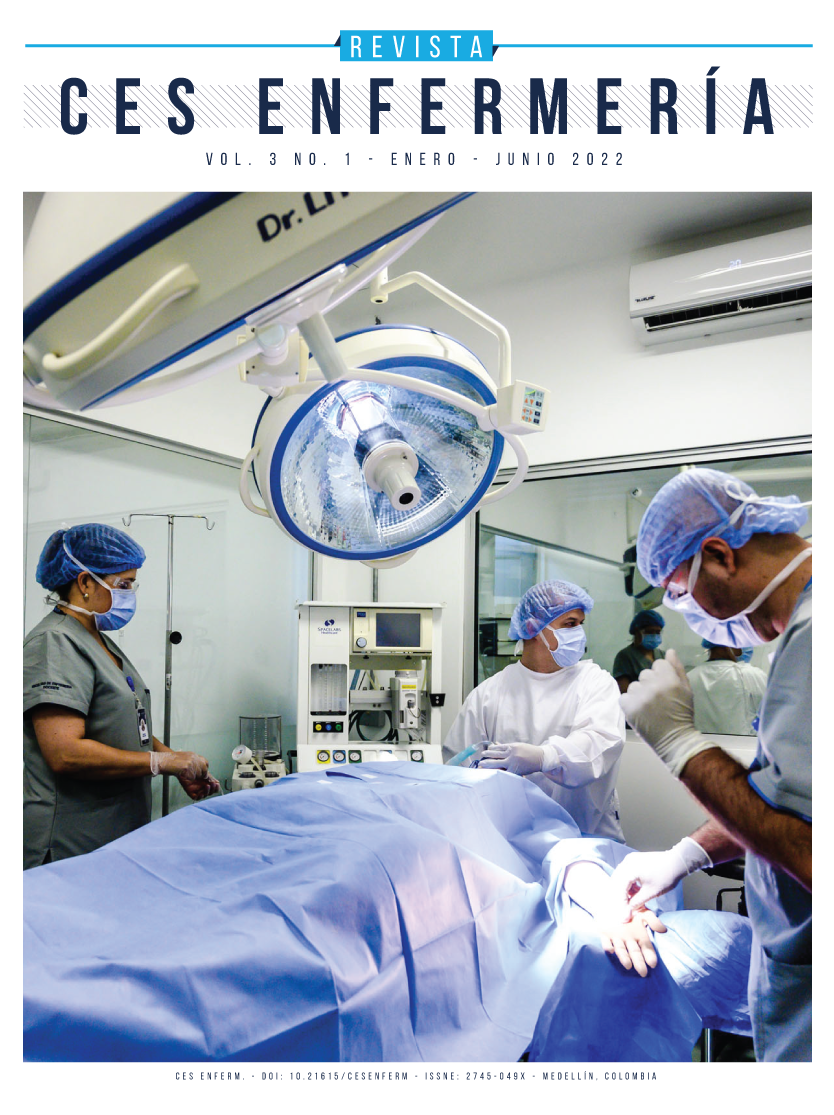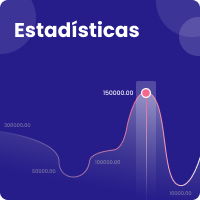Mnemonics “GANASTE TODO” in care of patients with increased intracranial pressure
DOI:
https://doi.org/10.21615/cesenferm.6708Keywords:
intracranial pressure, acute brain injury, abbreviations as topicAbstract
People with brain injury have both increased intracranial pressure and risk to develop it. Secondary injury includes a cascade of events that occur post the primary brain injury, which produce cerebral edema, increased intracranial pressure, cerebral hypoperfusion, compensatory failure, neurological complications, and poor prognosis. This article presents the mnemonics GANASTE TODO, as a guide that supports care for people who suffer a brain injury and helps prevent secondary injury, and includes care in glycemia, acid-base status, concentration serum sodium, hemoglobin, blood pressure, temperature, venous flow, comfort and pain management, and oxygenation. Nursing care is valuable to prevent secondary brain injury and this mnemonic can help in this goal and apply at the bedside.
Downloads
References
Robba C, Iannuzzi F, Taccone FS. Tier-three therapies for refractory intracranial hypertension in adult head trauma. Minerva Anestesiol [Internet]. 2021 Dec;87(12). Available from: https://www.minervamedica.it/index2.php?show=R02Y2021N12A1359
Rangel-Castillo L, Gopinath S, Robertson CS. Management of Intracranial Hypertension. Neurol Clin [Internet]. 2008 May;26(2):521–41. Available from: https://linkinghub.elsevier.com/retrieve/pii/S0733861908000212
East JM, Viau-Lapointe J, McCredie VA. Transfusion practices in traumatic brain injury. Curr Opin Anaesthesiol [Internet]. 2018 Apr;31(2):219–26. Available from: https://journals.lww.com/00001503-201804000-00017
Jeremitsky E, Omert L, Dunham CM, Protetch J, Rodriguez A. Harbingers of Poor Outcome the Day after Severe Brain Injury: Hypothermia, Hypoxia, and Hypoperfusion. J Trauma Inj Infect Crit Care [Internet]. 2003 Feb;54(2):312–9. Available from: http://journals.lww.com/00005373-200302000-00015
Kaur P, Sharma S. Recent Advances in Pathophysiology of Traumatic Brain Injury. Curr Neuropharmacol [Internet]. 2018 Aug 21;16(8):1224–38. Available from: http://www.eurekaselect.com/153132/article
Saherwala AA, Bader MK, Stutzman SE, Figueroa SA, Ghajar J, Gorman AR, et al. Increasing adherence to brain trauma foundation guidelines for hospital care of patients with traumatic brain injury. Crit care Nurs. 2018;38(1):e11–20.
Taccone FS, De Oliveira Manoel AL, Robba C, Vincent J-L. Use a “GHOST-CAP” in acute brain injury. Crit Care [Internet]. 2020 Dec 14;24(1):89. Available from: https://ccforum.biomedcentral.com/articles/10.1186/s13054-020-2825-7
Rhee SY. Glucose Control in Intensive Care Unit Patients: Recent Updates. J Neurocritical Care [Internet]. 2018 Dec 19;11(2):81–5. Available from: http://e-jnc.org/journal/view.php?doi=10.18700/jnc.180067
Mergenthaler P, Lindauer U, Dienel GA, Meisel A. Sugar for the brain: the role of glucose in physiological and pathological brain function. Trends Neurosci [Internet]. 2013 Oct;36(10):587–97. Available from: https://linkinghub.elsevier.com/retrieve/pii/S0166223613001306
Kurtz P, Rocha EEM. Nutrition Therapy, Glucose Control, and Brain Metabolism in Traumatic Brain Injury: A Multimodal Monitoring Approach. Front Neurosci [Internet]. 2020 Mar 24;14. Available from: https://www.frontiersin.org/article/10.3389/fnins.2020.00190/full
Eakins J. Blood Glucose Control in the Trauma Patient. J Diabetes Sci Technol [Internet]. 2009 Nov 1;3(6):1373–6. Available from: http://journals.sagepub.com/doi/10.1177/193229680900300617
Godoy DA, Behrouz R, Di Napoli M. Glucose control in acute brain injury. Curr Opin Crit Care [Internet]. 2016 Feb;1. Available from: http://journals.lww.com/00075198-900000000-99371
Garvin R, Mangat HS. Emergency Neurological Life Support: Severe Traumatic Brain Injury. Neurocrit Care [Internet]. 2017 Sep 14;27(S1):159–69. Available from: http://link.springer.com/10.1007/s12028-017-0461-0
Caldwell HG, Howe CA, Chalifoux CJ, Hoiland RL, Carr JMJR, Brown C V., et al. Arterial carbon dioxide and bicarbonate rather than pH regulate cerebral blood flow in the setting of acute experimental metabolic alkalosis. J Physiol [Internet]. 2021 Mar 18;599(5):1439–57. Available from: https://onlinelibrary.wiley.com/doi/10.1113/JP280682
Boedtkjer E, Hansen KB, Boedtkjer DM, Aalkjaer C, Boron WF. Extracellular HCO3- is sensed by mouse cerebral arteries: Regulation of tone by receptor protein tyrosine phosphatase γ. J Cereb Blood Flow Metab [Internet]. 2016 May 19;36(5):965–80. Available from: http://journals.sagepub.com/doi/10.1177/0271678X15610787
Sterns RH. Disorders of Plasma Sodium. Causes, Consequences, and Correction. Ingelfinger JR, editor. N Engl J Med [Internet]. 2015 Jan 1;372(1):55–65. Available from: http://www.nejm.org/doi/10.1056/NEJMra1404489
Butler FK, Holcomb JB, Schreiber MA, Kotwal RS, Jenkins DA, Champion HR, et al. Fluid Resuscitation for Hemorrhagic Shock in Tactical Combat Casualty Care: TCCC Guidelines. J Spec Oper Med [Internet]. 2014;14(3):13–38. Available from: http://www.ncbi.nlm.nih.gov/pubmed/25344706
Carney N, Totten AM, O’Reilly C, Ullman JS, Hawryluk GWJ, Bell MJ, et al. Guidelines for the Management of Severe Traumatic Brain Injury, Fourth Edition. Neurosurgery [Internet]. 2017 Jan;80(1):6–15. Available from: https://journals.lww.com/00006123-201701000-00003
Silverman A, Petersen NH. Physiology, Cerebral Autoregulation [Internet]. StatPearls. 2021. Available from: http://www.ncbi.nlm.nih.gov/pubmed/31985976
Geeraerts T, Velly L, Abdennour L, Asehnoune K, Audibert G, Bouzat P, et al. Management of severe traumatic brain injury (first 24 hours). Anaesth Crit Care Pain Med [Internet]. 2018 Apr;37(2):171–86. Available from: https://linkinghub.elsevier.com/retrieve/pii/S2352556817303703
Rockett H, Thompson HJ, Blissitt PA. Fever Management Practices of Neuroscience Nurses. J Neurosci Nurs [Internet]. 2015 Apr;47(2):66–75. Available from: https://journals.lww.com/01376517-201504000-00002
Bohman L-E, Levine JM. Fever and therapeutic normothermia in severe brain injury. Curr Opin Crit Care [Internet]. 2014 Apr;20(2):182–8. Available from: http://journals.lww.com/00075198-201404000-00009
Sacco TL, Davis JG. Management of Intracranial Pressure Part II. Dimens Crit Care Nurs [Internet]. 2019;38(2):61–9. Available from: http://journals.lww.com/00003465-201903000-00002
Feldman Z, Kanter MJ, Robertson CS, Contant CF, Hayes C, Sheinberg MA, et al. Effect of head elevation on intracranial pressure, cerebral perfusion pressure, and cerebral blood flow in head-injured patients. J Neurosurg [Internet]. 1992 Feb;76(2):207–11. Available from: https://thejns.org/view/journals/j-neurosurg/76/2/article-p207.xml
Ledwith MB, Bloom S, Maloney-Wilensky E, Coyle B, Polomano RC, Le Roux PD. Effect of Body Position on Cerebral Oxygenation and Physiologic Parameters in Patients With Acute Neurological Conditions. J Neurosci Nurs [Internet]. 2010 Oct;42(5):280–7. Available from: https://journals.lww.com/01376517-201010000-00008
Sacco TL, Delibert SA. Management of Intracranial Pressure: Part I. Pharmacologic Interventions. Dimens Crit Care Nurs [Internet]. 2018;37(3):120–9. Available from: http://journals.lww.com/00003465-201805000-00002
Downloads
Published
How to Cite
Issue
Section
License
Copyright (c) 2022 CES Enfermería

This work is licensed under a Creative Commons Attribution-NonCommercial-ShareAlike 4.0 International License.
| Article metrics | |
|---|---|
| Abstract views | |
| Galley vies | |
| PDF Views | |
| HTML views | |
| Other views | |




